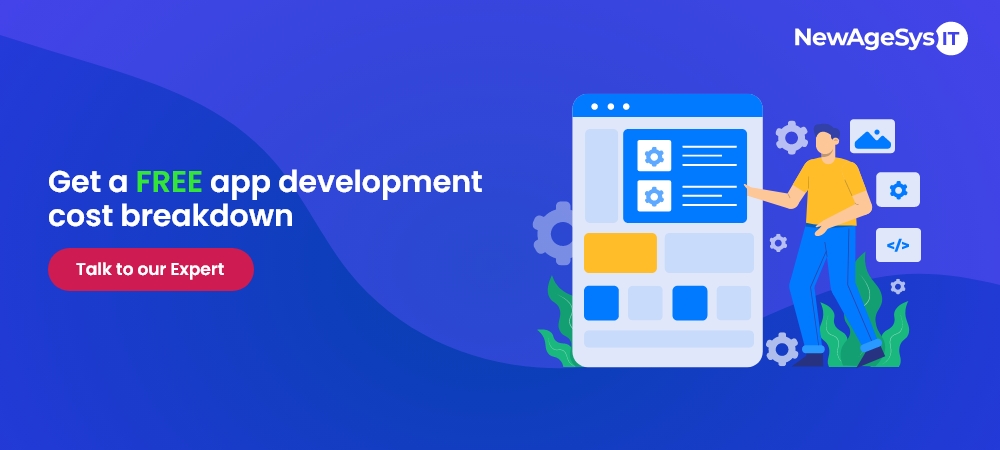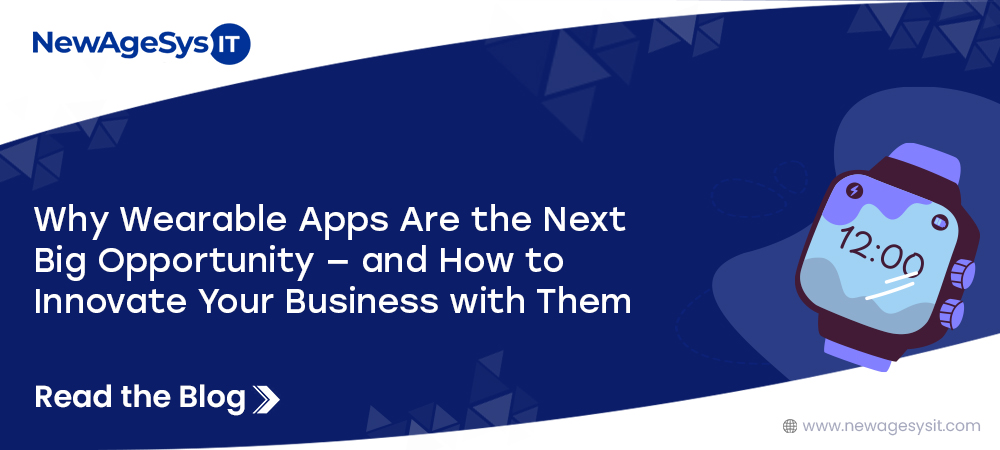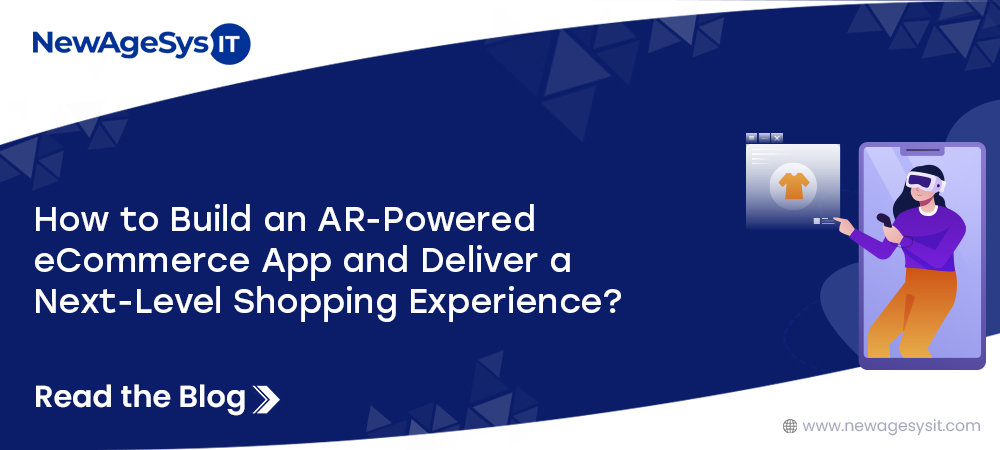Have you ever envisioned transforming your groundbreaking app concept into a reality? Be it a revolutionary social networking platform or an innovative fitness tracker; the potential is limitless. Yet, embarking on this development journey introduces a pivotal question: the cost. With app development expenses varying widely—from a modest few thousand to an eye-opening hundreds of thousands—the stakes are high. Gaining clarity on the influencing factors not only equips you with the knowledge to make well-informed choices but also sets a foundation of realistic expectations, guiding you confidently through the app development maze.
This blog stands as your navigator, offering detailed answers and profound insights into the myriad of elements shaping app development costs. From varied monetization strategies and the intricacies of mobile app development processes to cost-effective techniques and cost to build an app, this guide is your ticket to cost-saving wisdom in your app creation journey.
Demystifying the costs of app development
Navigating the landscape of app development costs, the average cost to develop an app generally spans from $20,000 to a substantial $100,000. Yet, this is merely the beginning for apps infused with complexity—those that boast advanced functionalities, seamless database or API integrations, and meticulous design details can expect to see costs escalate beyond the initial estimates. A multitude of significant factors come into play, impacting the final tally. Delving into these influential factors not only enlightens your decision-making process but also paves the way for a more strategic approach to app development cost planning.

Factors that impact your app development costs
Complexity of the app
Picture your app as a multifaceted puzzle. The richness of its features and functionalities directly correlates with its complexity. Simple, straightforward apps necessitate a modest investment of development time, naturally leading to lower costs. Contrastingly, when we venture into the territory of apps enriched with real-time chat capabilities, intricate animations, or the immersive world of augmented reality, the complexity—and thereby the app development price escalates. Such advancements demand a more substantial development effort, elevating the overall cost of bringing these ambitious projects to life.
A complex app project example is NewAgeSysIT’s development of a groundbreaking ERP solution, Central Florida Transport, LLC (CFT). This system centralized critical business data, encompassing sales, dispatch, job sheets, materials, and customer information. The client achieved significant cost savings of 20-30% on internal investments by automating processes.
Platform Selection
Embarking on your mobile app development voyage begins with a pivotal decision: selecting the right platform. This choice should reflect a deep understanding of your target audience’s preferences, whether it leans towards iOS, Android, web-based applications, or perhaps the versatility of cross-platform solutions. Startups, especially those navigating within the constraints of tighter budgets, might find it prudent to focus their initial efforts on mastering a single platform. This strategic approach not only conserves resources but also lays a solid foundation for future expansion across multiple platforms.
Outlined below are the key app development platform choices:
Native App Platform (Android & iOS)
Tailoring your app specifically for Android or iOS can be the most cost-effective strategy for those looking to leverage platform-specific features to the fullest. iOS apps lean on Swift and Objective C for their development, offering a rich ecosystem for developers. Android, with its Java or Kotlin programming, opens up a world of customization and flexibility.
Cross-platform
The rise of cross-platform frameworks like Flutter and React Native represents a paradigm shift towards efficiency and cost-effectiveness. This approach allows for a singular codebase to flourish on both iOS and Android, significantly reducing development time and resources. It’s a compelling choice for projects aiming at broad reach without the extensive investment typically associated with native development.
Web App Platform
Stepping away from traditional app stores, web apps, and progressive web applications offer a seamless, cost-efficient entry into the digital space. With development costs ranging considerably, these platforms provide flexibility and accessibility, bypassing the need for installation through app stores.
Hybrid App Platform
Bridging the gap between native and web, hybrid apps offer a middle ground, installed like native apps but operating through web technologies. This amalgamation enables a wider reach while maintaining a semblance of the native app experience.
App Category
The realm of app development is marked by its diversity, with costs fluctuating significantly across different categories. This variation is influenced by a multitude of factors, including the intended user base, the complexity of features, and the paramount importance of security measures. Each category, from e-commerce and social networking to on-demand services, presents its unique set of challenges and considerations, reflecting the financial investment required to bring such apps to fruition.
E-commerce/M-Commerce Apps
In the digital age, E-commerce and M-commerce applications stand as pillars of the online marketplace, driven by their comprehensive features, the agility of real-time transactions, the prowess to manage vast user engagement, and stringent security protocols. These applications not only revolutionize how businesses connect with their customers but also set new benchmarks for user experience and transactional efficiency.
Social Networking Apps
The realm of social media is a dynamic and expansive landscape, where platforms integrate cutting-edge third-party services and leverage device capabilities—like high-resolution cameras and sophisticated audio recorders—to enrich user interaction. Engineered to support millions of users in a seamless, scalable environment, social networking applications embody the nexus of community and technology.
An example of this innovation is Showcase Talks by NewAgeSysIT, a visionary platform enabling businesses to illuminate their services, orchestrate consultations, and foster customer engagements. This pioneering project, securing $1 million in funding, now serves as a thriving community hub for thousands.
Hardware-Dependent Apps
The Internet of Things (IoT) introduces a new frontier for app development, where applications transcend traditional boundaries through their intrinsic reliance on hardware devices. These apps bridge the digital and physical worlds, executing tasks from data harvesting to direct device control, underpinned by the tangible elements of technology they interact with. This synergy between software and hardware unlocks unprecedented potential for automation and efficiency in our daily lives.
On-Demand Apps
The on-demand economy has catalyzed a transformation in service delivery, with apps designed to meet the needs of users, service providers, and businesses in real-time. These platforms are meticulously crafted to facilitate instant access to services, embodying convenience and flexibility.
ISRA by NewAgeSysIT is a testament to the impact of such platforms, seamlessly connecting hairstylists and makeup artists with a burgeoning community of over 10,000 active users, orchestrating more than 15,000 appointments. This ecosystem not only exemplifies user-centric design but also showcases the scalability and personalized service delivery that on-demand apps can achieve.
Design Requirements
The success of an application is deeply intertwined with its design—a visually striking and intuitively navigable user interface (UI) can significantly enhance user engagement. When venturing into the realm of app design, the road forks into two paths: the bespoke elegance of Custom UI and the streamlined simplicity of Standard UI. Opting for a custom-designed interface invites complexity, requiring a more labor-intensive creation process that naturally inflates the budget. The pursuit of bespoke design elements, animations, and a polished finish demands extensive developer hours, reflecting a higher investment for achieving that unique user experience.
Backend infrastructure
Consider the backend infrastructure as the powerhouse behind your app’s functionality. Essential features such as secure user authentication, efficient data storage, and seamless real-time updates require a solid backend system, akin to a well-oiled engine. The financial outlay for this crucial component hinges on several variables: the technology stack selection, the server capacity to ensure smooth operation, and the maintenance needed to keep the app running optimally. This foundation, while unseen by the user, is critical for an app’s reliability and performance, influencing overall development costs.
Integration with third-party services
In today’s interconnected digital ecosystem, many applications enhance their capabilities by integrating with third-party services, such as payment gateways, social media authentication, or sophisticated analytics tools. This strategic incorporation can offer a cost-efficient alternative to developing complex functionalities in-house. However, opting for premium APIs or subscription-based services necessitates a careful evaluation, as these choices can incrementally increase the project’s budget. The judicious selection of these external services is a balancing act between enriching the app’s functionality and managing the associated costs.
Maintenance and support
The launch of your app marks only the beginning of its lifecycle. Ensuring its continued success involves regular maintenance, including critical bug fixes, security enhancements, and the introduction of new features. This phase demands a sustained investment in developer resources to keep the app vibrant and secure. Acknowledging these expenses from the outset is crucial, as they are indispensable for maintaining the app’s health and relevance in a rapidly evolving digital landscape. Planning for these inevitable costs is a proactive strategy to ensure your mobile app remains a dynamic and engaging platform for users.
Estimating app development cost
Fixed-price model
In the realm of app development cost estimation, the fixed-price model stands as a beacon for projects with well-defined scopes and precise requirements. This model simplifies financial planning by setting a predetermined price for the entire project. While its predictability is a boon for budget management, it comes with its limitations, especially in terms of flexibility. Adjustments or scope expansions can incur extra charges, making this model less ideal for projects likely to evolve in complexity or duration. However, for initiatives with crystal-clear objectives and stable requirements, it offers a straightforward path to financial clarity.
Time and materials model
The time and materials model offers a dynamic approach to app development, where costs are tied directly to the hours worked and resources utilized by the development team. This model shines in its adaptability, making it a perfect fit for projects that are complex or subject to changes. Its transparent billing structure fosters flexibility, allowing for seamless adjustments as your project evolves. However, this openness comes with the challenge of unpredictability in costs, demanding a degree of trust in your development team’s efficiency and estimation accuracy. For projects where change is the only constant, this model provides the necessary leeway to pivot and adapt.
Hybrid model
Merging the predictability of fixed pricing with the adaptability of time and materials, the hybrid model offers a tailored approach to app development cost estimation. This model locks in costs for the project’s core functionalities while retaining the flexibility to accommodate additional features or maintenance on a time-and-materials basis. It’s a strategy that balances the desire for budget predictability against the need for project flexibility. However, its success hinges on meticulous planning and a clear definition of the project’s fixed-price scope, ensuring that the foundational elements are well-established while allowing room for growth and enhancement.
How Can NewAgeSysIT Help You With Mobile App Development Cost Estimation?
Embarking on the journey to bring a mobile application from concept to reality is an endeavor filled with complexity and nuances, especially when it comes to cost estimation. A detailed and considered approach to understanding the various elements that influence the overall expenses is crucial for developing a well-rounded and accurate budget projection. The challenge of accurately forecasting the costs associated with mobile app development, particularly in competitive markets like the US, UK, or Australia, can seem formidable.
This is where NewAgeSysIT positions itself as your guiding partner. With an esteemed reputation for delivering exceptional mobile app development services, NewAgeSysIT is home to professionals who are not just adept but passionate about creating scalable, innovative applications equipped with the latest features and functionalities. Our portfolio is a testament to our commitment, showcasing a variety of groundbreaking applications developed for leading global brands.
Whether you’re at the inception stage, pondering over the feasibility of a mobile app idea, or ready to obtain a preliminary cost estimate tailored to the unique demands of your business, our team at NewAgeSysIT is here to propel your project forward.

Conclusion
Venturing into mobile or web app development is an exhilarating journey, yet steering through the intricacies of cost management requires careful navigation. The eventual cost of your app is significantly influenced by a confluence of factors – from the complexity of its features and the chosen development platform to the expertise of your development partner. Strategic planning becomes indispensable.
From the outset, defining your app’s purpose, target demographic, and essential functionalities ensures that your budgetary framework is in perfect alignment with your development objectives. Whether your project is a straightforward app with basic functionalities, estimated between $10,000 and $40,000, or a sophisticated application with advanced features costing anywhere from $100,000 to $500,000, early and accurate cost estimation is key to avoiding unforeseen financial hurdles.
At NewAgeSysIT, we believe in empowering our clients with the knowledge and insights needed for effective planning and cost optimization, without compromising on the innovative spirit of their vision. For a bespoke estimate that reflects the specificities of your project, contact our experts for a free consultation. With a deep understanding of your vision, budgetary constraints, and developmental ambitions, we are dedicated to assisting you in crafting your success story in app development.










